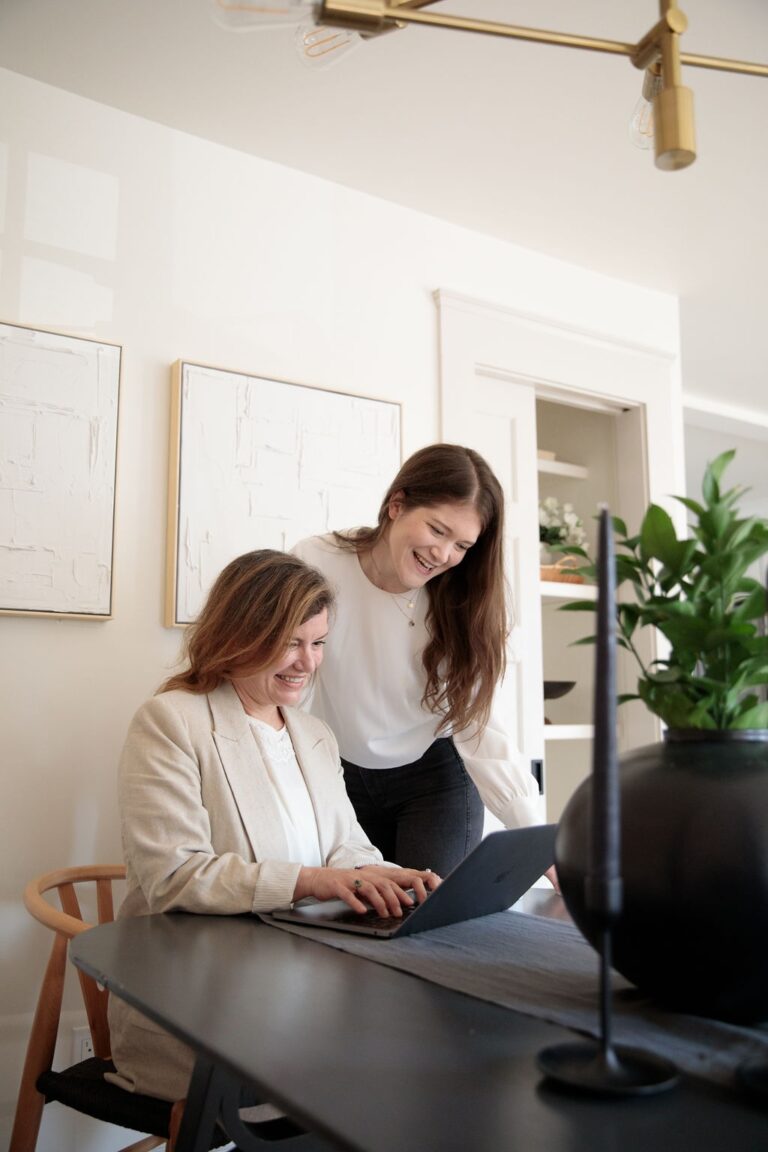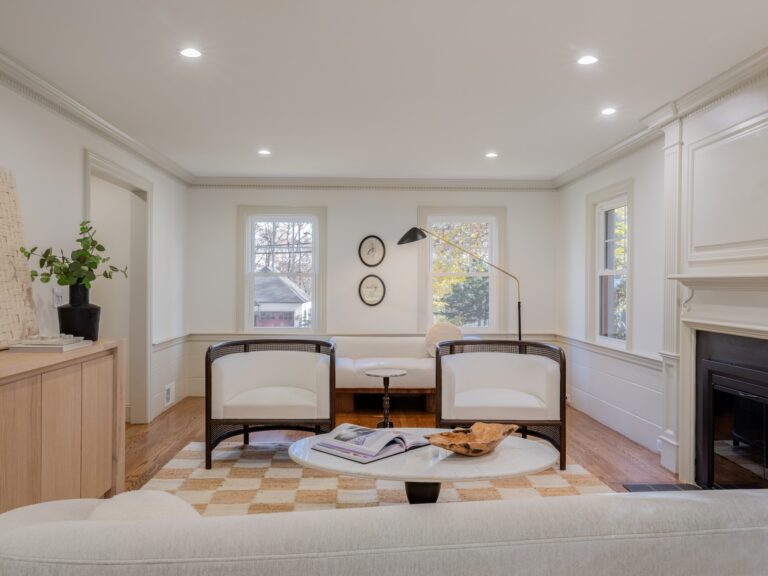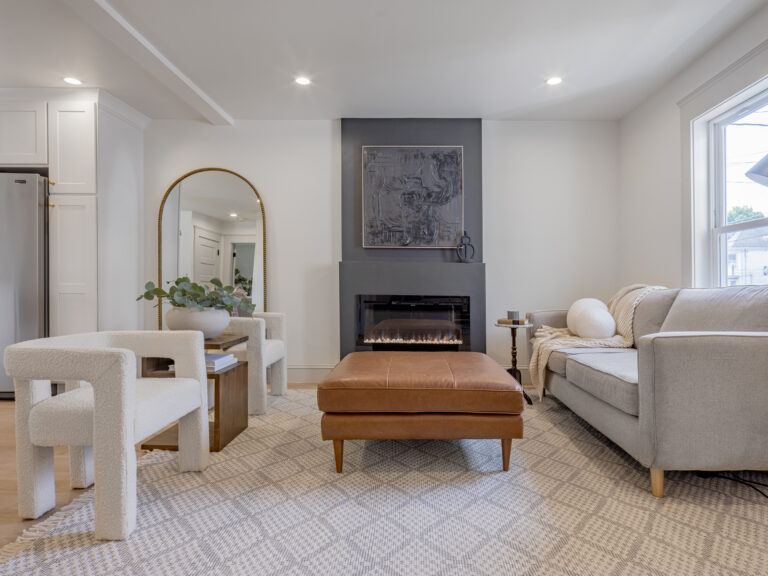Contemporary Design Style 101: Recreate the CB2 Look at Home
If you dream of a home with clean lines, bold contrasts, and mixed textures (guilty as charged), you’ll love the contemporary design style. Here’s how to bring the CB2 look into your space–without a design degree.
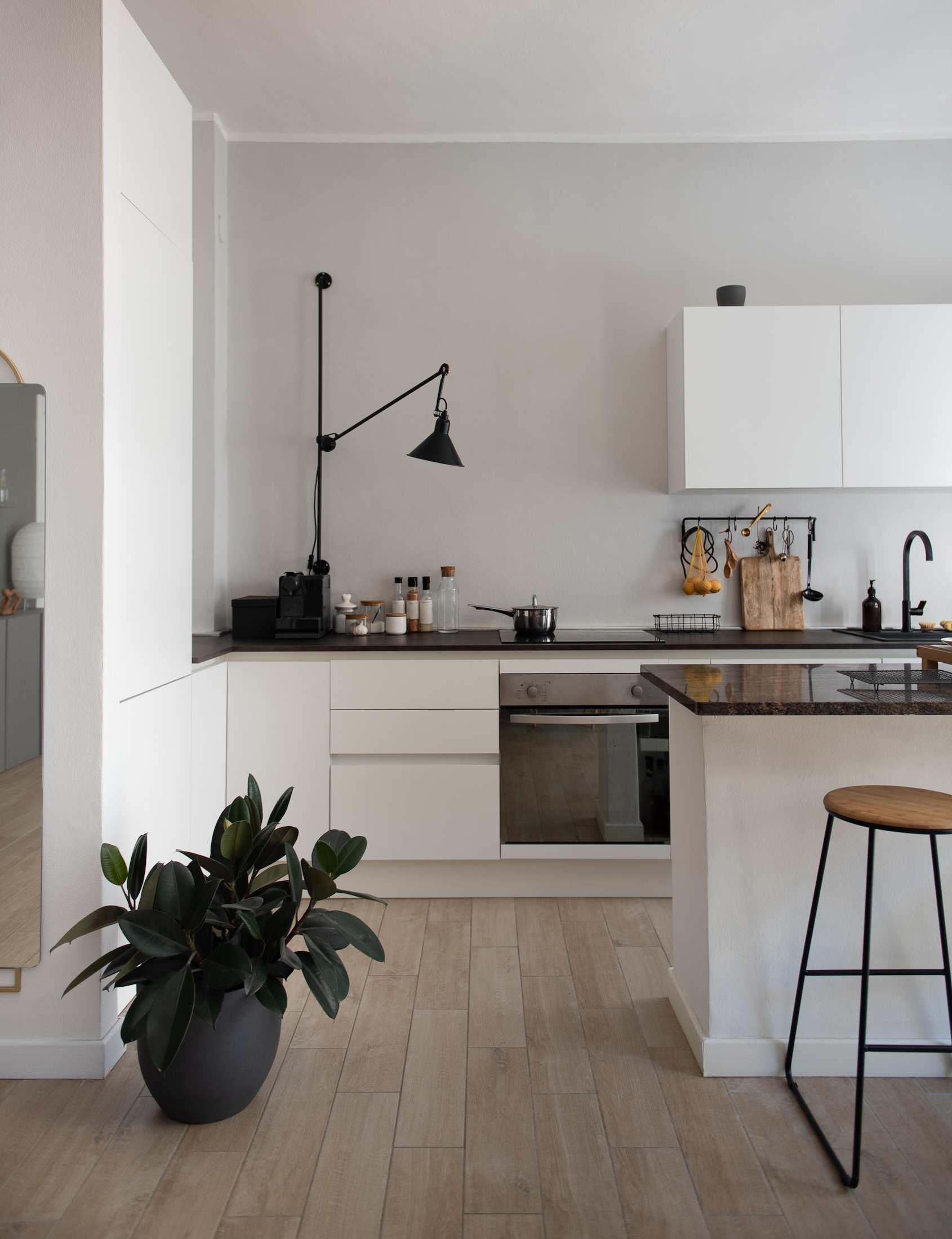
Picture this: You’re sitting at the kitchen table flipping through the *perfectly curated* CB2 catalog that just came in the mail. You know the one I’m talking about. It’s glossy pages boast pictures of bold furniture and decor pieces and minimalist rooms that balance risk and restraint.
You carefully cut out pictures of your favorite spaces, hang them on your inspiration board, and create a mental wishlist so that one day you can bring them to life in your own space.
You have a vision for your home, but you’re not sure how to execute it.
I’ll be honest. The contemporary design style looks effortlessly elegant, but recreating it in your own home does require effort— and some know-how. It isn’t about following strict rules or copying a magazine catalog. It’s about designing a space that reflects you–someone who loves combining contemporary living with everyday comforts.
If you’re ready to take the design *leap* and re-imagine your not-so-contemporary space, you’re in the right place. In this blog post, I’ll cover the history of contemporary interior design, its guiding principles, and practical tips for incorporating this elevated interior design style into your own home.
Sounds good?
Let’s jump into your *beginner-friendly* crash course on the Contemporary Design Style!
What Is Contemporary Interior Design?
Before we bring your contemporary dream home to life, let’s debunk the most common misconception. The contemporary design style tends to be confused with the modern design style (I used to make this mistake, too), but they’re actually two distinct interior design styles.
Modern Design Style
Modern design was born out of the 19th-century Modernist movement. It was grounded in pragmatism, emphasizing simplicity and functionality above all else. Modern decor took center stage between the early 1900s and 1950s, and paved the way for the contemporary design style, which followed shortly after.
The modern art movement was heavily influenced by Scandinavian and German Bauhaus design. In the Bauhaus style, functionalism was the name of the game. It shed ornamentation and, instead, focused on balanced forms and abstract shapes.
Similarly, the Scandinavian style rejected ornamentation and maximalism, prioritizing function instead. It drew inspiration from the modernist movement’s emphasis on minimalism, as well as the Nordic focus on cozy, bright, and simple interiors, which aimed to combat the short winter days in the region.
The modern design style is simple, bright, and open. It has a minimalist elegance that honors the form and function of each element in the room, whether it’s architecture, color, furniture, or decor.
Contemporary Design Style
The contemporary style emerged in the 1970s in response to the modernist and post-modernist movements, but took on an entirely new meaning of its own. It’s not tied to a specific time period, but instead serves as a general term to describe the latest design trends.
Like the modernist style, the contemporary style is marked by minimalism, featuring clean lines and organic shapes. But it also explores a broader, more saturated color range than just neutrals, sourcing inspiration from the bold Art Deco style. It celebrates simplicity without sacrificing comfort.
The result? Contemporary spaces that feel current, functional, and vibrant.
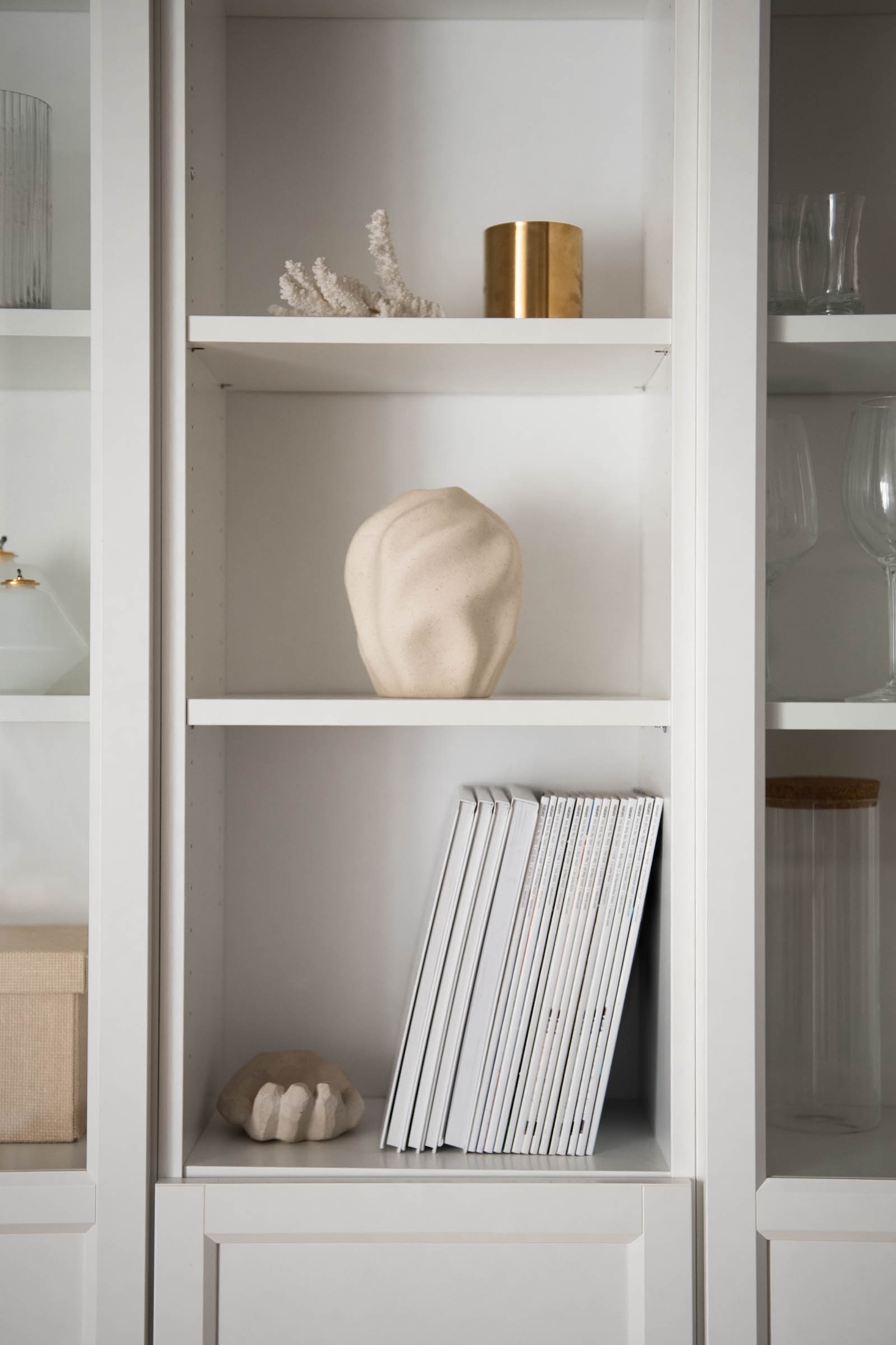
Contemporary Design Style Elements
Now that we’ve cleared the air, let’s explore the foundational elements of contemporary design. From the defining colors to the textures and shapes, here is everything you need to know about these dynamic interiors.
Clean Lines and Organic Shapes
The contemporary design style leans toward clean, simple lines that away from excessive ornamentation. Think of a sleek sofa with straight edges or a minimalist coffee table with rounded curves.
You don’t have to rely solely on straight or rounded silhouettes to create a contemporary design. Instead, mix the two together. The interplay between straight and curved edges creates a more dynamic style, allowing each element in your space to stand out.
Neutral Foundation with Pops of Color
Contemporary design starts with a neutral base (think whites, grays, beiges, and earthy tones), and then incorporates pops of saturated colors on top. The neutral backdrop creates a sense of spaciousness, while the pops of color infuse personality into the space.
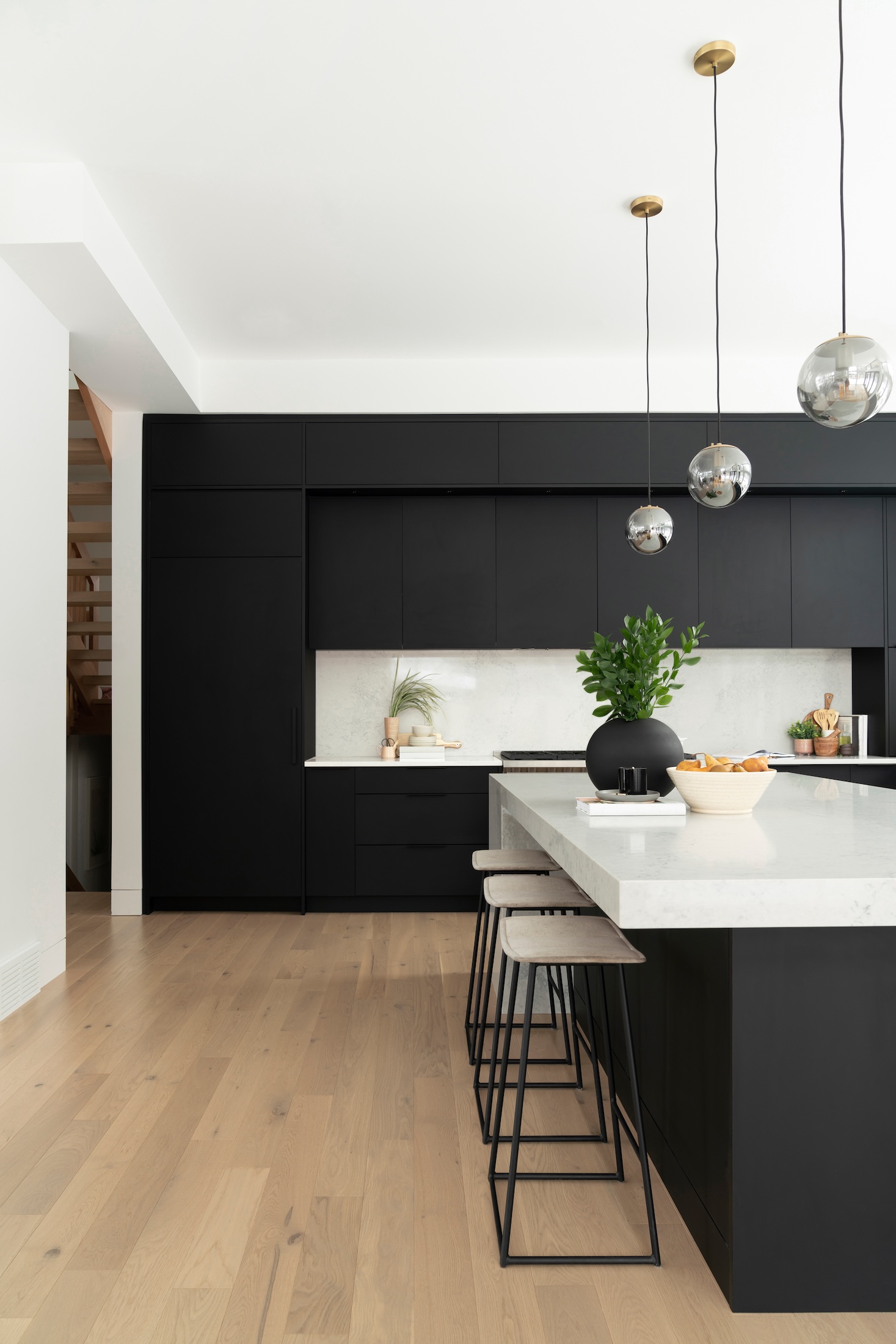
If you get sick of a certain color, don’t worry. You can experiment with different palettes through interchangeable decor pieces like art, coffee table books, mirrors, and plants. Think of the neutral backdrop as a blank canvas, allowing you to experiment with a range of colors and tonalities.
Layered Textures and Materials
Don’t let the neutral foundation and clean lines fool you. The contemporary design style adds visual interest and warmth through a mix of textures and materials.
From bold marble veining to rustic wood details and chrome metal finishes, contemporary designs feature a wide range of colors, textures, and patterns that add a tactile element to each room. The contrast creates a necessary visual balance and depth, ensuring that no space falls flat.
RELATED POST: Transitional Design Style 101: How to Create a Balanced Home
Natural Light and Negative Space
While the interior design is minimal, the use of natural light is indulgent. Contemporary design emphasizes bright, airy spaces through the use of minimal window treatments, strategic mirror placements, and open floor plans.
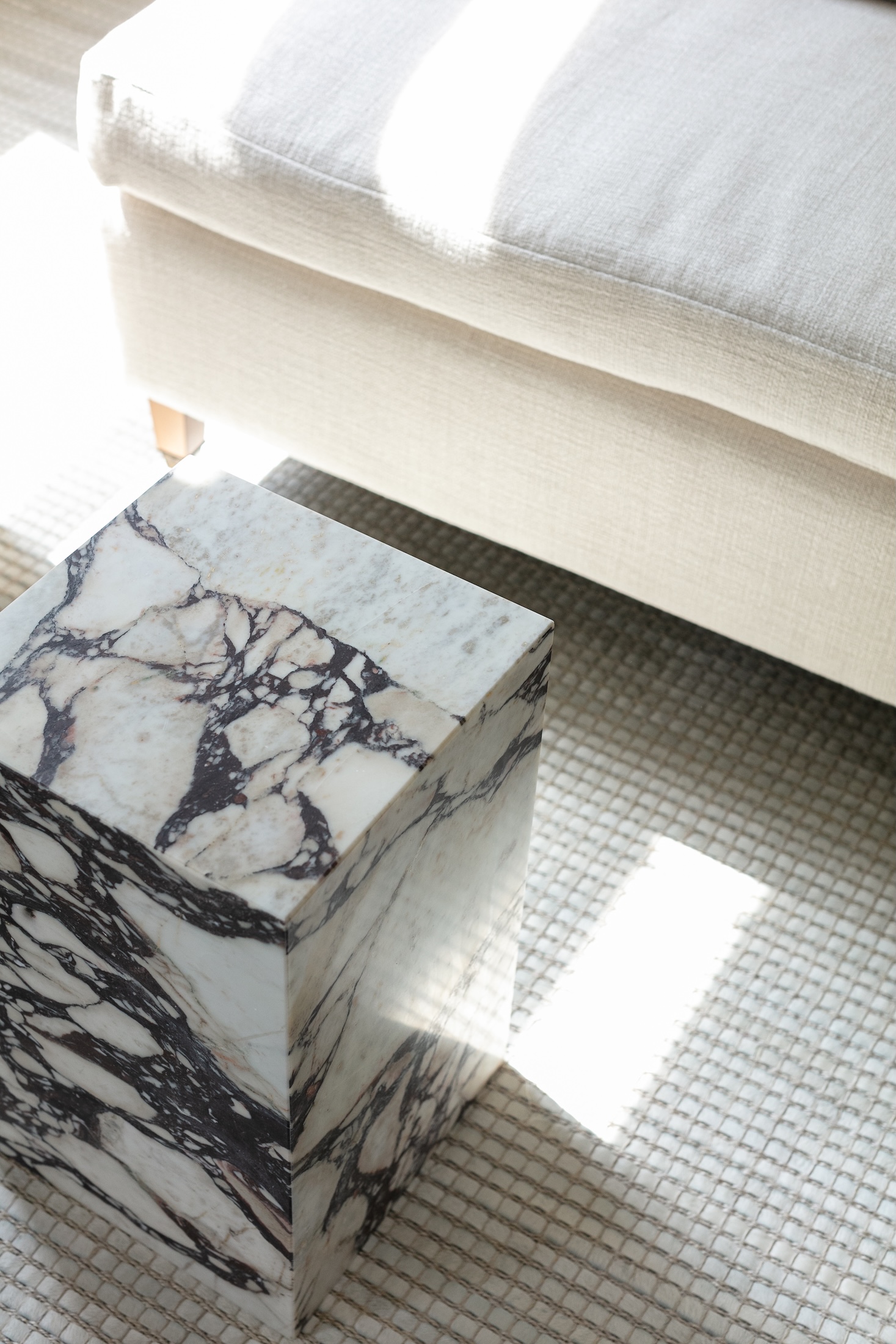
It also balances color with intentional white space. You can think of negative space as a visual resting place, where your eye can take a break in between design elements.
If you’re home is on the smaller side or lacks natural light, no problem. You can still achieve the contemporary look by incorporating light colors, warm lighting, and large mirrors into your space.
How to Bring the Contemporary Design Style Home
If minimal elegance, organic materials, and clean lines are calling your name, here is how to welcome the contemporary design style into your home, with zero design experience. It’s easy, I promise!
Create a Neutral Base
Paint has a massive impact on your room’s design without requiring a massive investment (love that!)
Start by establishing a neutral foundation for your space. I’m not saying you have to paint every inch of your walls, trim, and doors stark white (like me). But consider a warm, earthy base color rooted in beige, gray, white, navy, or charcoal to start.
Remember to test paint colors in different lighting conditions before committing, and check out our guide to sampling paint colors if you need a quick refresher.
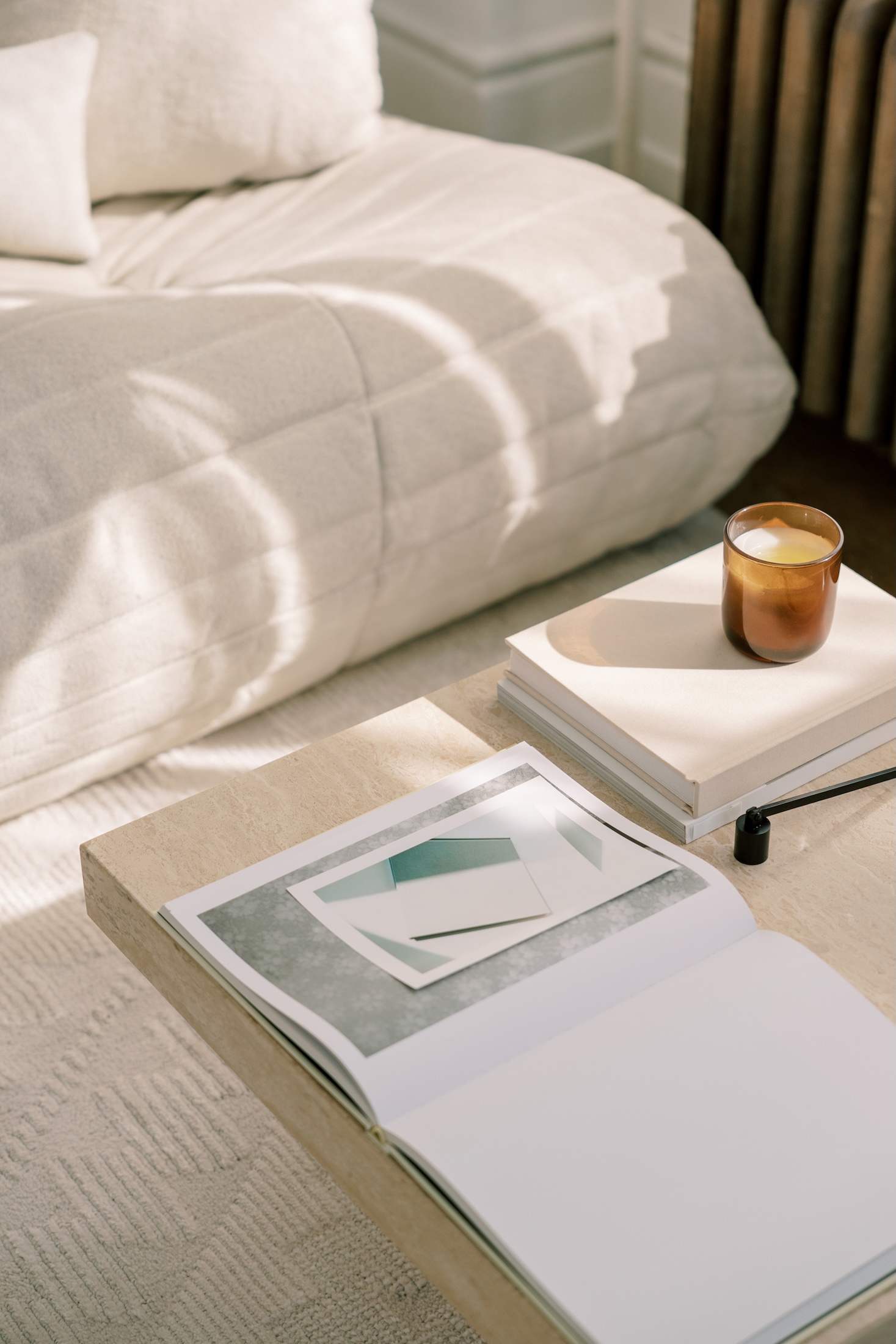
Invest in Timeless Furniture
Minimalist design is rooted in quality, not quantity. Instead of filling your space with a bunch of small pieces, invest in fewer, higher-quality items with clean lines and timeless appeal.
Start with the largest pieces first and use those to anchor your space. Think neutral, timeless, and simple silhouettes. From there, you can mix textures, materials, and colors with smaller furniture and decor.
Best Stores to Shop Contemporary Furniture & Decor
Contemporary and comfort go hand in hand. Select furniture that not only looks good but also feels comfortable to use. Test sofas, ensure dining chairs provide proper support, and feel the different materials before buying.
And this goes without saying, but I think it’s important to emphasize: You don’t need to buy everything at once. Start with one room or one piece of furniture and gradually add pieces as your budget allows.
RELATED POST: Interior Design Basics: How to Create Your Dream Home *Without a Design Degree*
Layer in Textures, Materials, and Pops of Color
Once you have your neutral base and key furniture pieces, start layering in texture, materials, and color through intentional home decor. Remember, this isn’t a free-for-all. Contemporary design emphasizes function and simplicity, so prioritize decor that strikes a balance between both.
Add throw pillows for comfort and texture, anchor your space with an area rug, add a potted plant for a pop of color, and hang artwork that speaks to you–whether it’s photography from your travels, family photos in sleek frames, or abstract prints.
Embrace the Emptiness
I know that sounds weird, but bear with me. One of the most important principles of contemporary design style is knowing when to stop. Negative space – areas without furniture or decor – is just as important as the other design elements we covered.
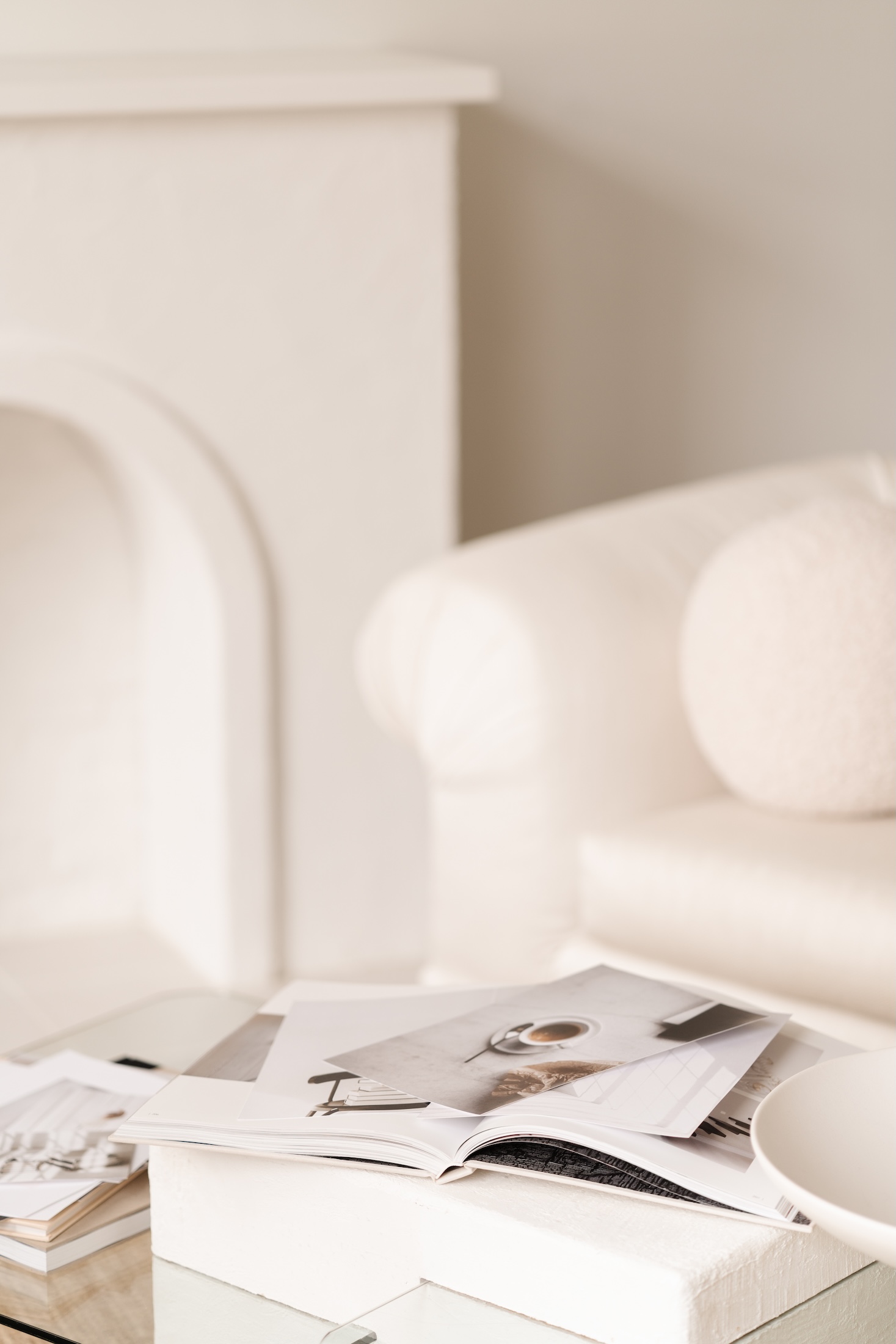
Resist the urge to fill every corner or cover every surface. Empty space allows your eye to rest and makes the pieces you do include feel more intentional and meaningful.
Your Version of Contemporary
The best contemporary spaces feel effortless because they’re designed around real life. These spaces prioritize quality over quantity, function over frivolity, and timelessness over trends.
They accommodate morning coffee rituals and movie marathons with the kids. They provide calm backdrops for the hustle and bustle of everyday life and offer beautiful settings for cherished family memories.
Whether you’re starting with a single room or reimagining your entire space, the principles of contemporary design style can help you create a home that feels as good as it looks.
This post is all about how to incorporate the contemporary design style in your home.


